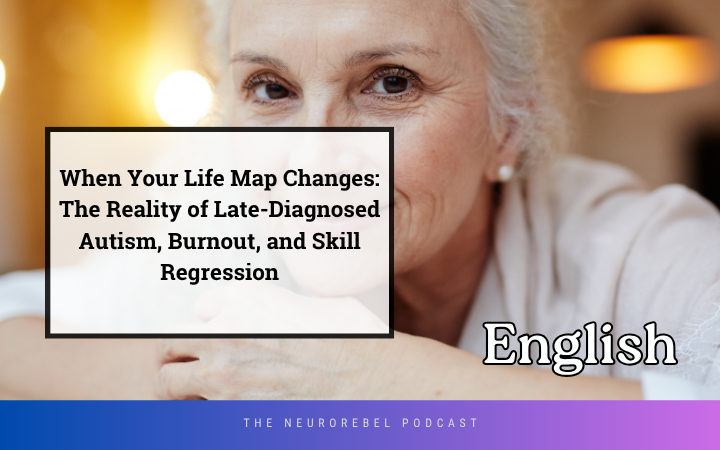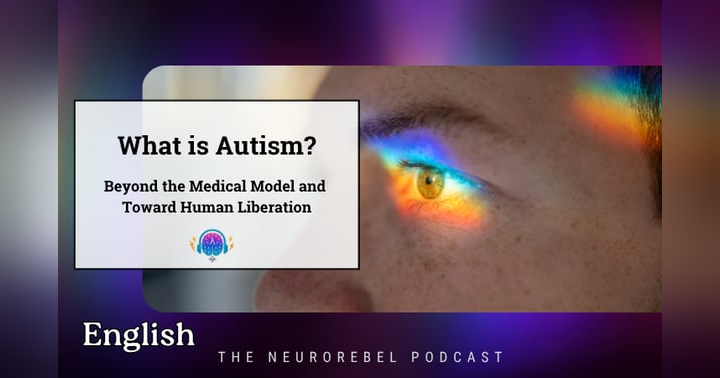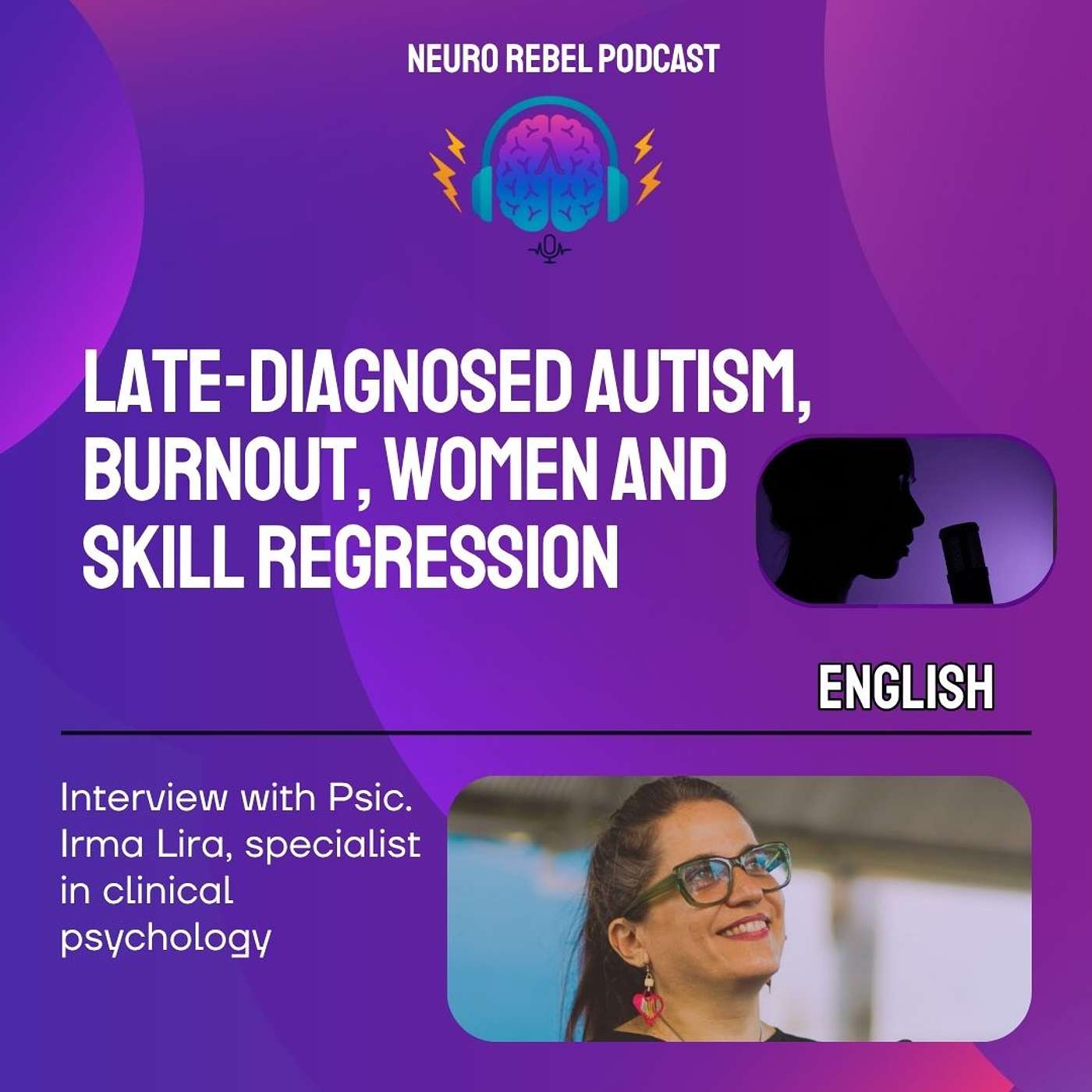When Your Life Map Changes: The Reality of Late-Diagnosed Autism, Burnout, and Skill Regression

When Your Life Map Changes: The Reality of Late-Diagnosed Autism and Skill Regression
Why millions of adults worldwide are rewriting their life stories at 30, 40, or 50
Imagine you've been navigating your entire life with the wrong map. You've reached destinations, built relationships, developed a career, but always felt like something didn't quite add up. The routes others took effortlessly were uphill battles for you. The highways that seemed smooth for everyone else were obstacle-filled paths with invisible barriers.
And then, at 40, someone hands you the correct map.
This is the reality for millions of adults receiving a late autism diagnosis—a phenomenon that's quietly transforming our understanding of neurodivergence across the globe.
The Invisible Puzzle of Autistic Women
The research is damning: autistic women have been systematically overlooked by a diagnostic system designed with male criteria. While official data speaks of a 4:1 ratio between autistic men and women, recent studies suggest the real figure could be closer to 3:1, indicating massive underdiagnosis in the female population.
Why does this happen? Gender bias in identifying autistic traits is rooted in the idea that we socially maintain a set of expectations about how girls relate to others, assumptions that their play is quieter or that they tend to be shyer.
This apparent "advantage" becomes a devastating trap. Girls with autism develop a superior ability to "camouflage" or compensate for their social difficulties, presenting strengths that can mask social impairments and contribute to late diagnosis.
Put simply, girls learn to become consummate actresses of neurotypicality, paying an emotional price that doesn't become evident until decades later.
The Price of Masking: When Performance Exhausts You
Autistic adults describe burnout as a state where "all internal resources are exhausted beyond measure and there's no clean-up crew left." It's far more than workplace exhaustion; it's the collapse of decades of effort to fit into a world that wasn't designed for brains like theirs.
Research by Cook and colleagues (2022) explains that this compensation is achieved by solving social situations intellectually. Autistics with average to high IQ and language skills are those who most frequently fly under the radar.
The problem arises when these compensation mechanisms become unsustainable. A study revealed that approximately 50% of people diagnosed with autism in adulthood had prior contact with a mental health clinic and presented high levels of depression and anxiety symptoms.
Even more alarming: suicidal ideation was observed in 66% of people who attended an adult autism clinic. These numbers aren't cold statistics; they represent decades of silent struggle against a system that doesn't recognize their neurological reality.
Skill Regression: When Your Brain Says "Enough"
One of the most misunderstood aspects of late autism is what we call skill regression. It's not a degenerative condition, but rather the loss of the capacity to pretend you're not autistic, making it seem like your autistic traits are becoming exaggerated.
Autistic adults describe the main characteristics of autistic burnout as chronic exhaustion, loss of skills, and decreased tolerance to stimuli. The person may temporarily lose abilities they previously managed: social skills, sensory tolerance, executive function, and even language abilities.
This regression can be devastating for those experiencing it. During burnout, people lose executive function and self-care abilities. The capacity for sensory and social overload is reduced to almost nothing.
The good news? These regressions can be temporary, lasting months, years, or become permanent, but with adequate support and environmental changes, many skills can be recovered.
The International Landscape: Unique Challenges
Globally, late diagnosis faces additional challenges beyond gender bias. CDC data shows that Hispanic children are diagnosed on average 2.5 years later than white children, a gap that likely widens in adults.
The barriers are multiple and complex:
Cultural: Among Hispanic populations, autism detection usually occurs at a later age. Fewer economic resources mean less access to healthcare, hence the delayed diagnosis. Cultural expectations about female behavior can cause autistic traits to be interpreted as "shyness" or "good manners."
Economic: Most countries lack specialized resources for adult autism diagnosis, making it practically inaccessible for many.
Linguistic: Most diagnostic tools are designed and validated in English, with little cultural adaptation for different contexts.
The Warning Signs No One Explained
For those wondering if they might be autistic, here are common patterns in late diagnoses:
Social Masking Signals
- Feeling like you're constantly "performing" in social situations
- Studying and copying others' behaviors to fit in
- Extreme exhaustion after social events
- Feeling like an "impostor" in your own life
Overlooked Sensory Patterns
- Hypersensitivity to textures, sounds, and lights that others tolerate
- Need for specific routines to function
- Intense interests that others consider "obsessions"
- Difficulties with unexpected changes in plans
The Emotional Cost
- History of anxiety, depression, or unexplained "nervous breakdowns"
- Chronic feeling of being "different" without knowing why
- Difficulties maintaining long-term friendships
- Romantic relationships are complicated by communication misunderstandings
The Process of Rewriting Your Story
Receiving an autism diagnosis in adulthood isn't just getting a label; it's a profound process of reinterpreting an entire life. As one diagnosed person explained: "Someone who's pretending to be another person or someone who's completely hiding all difficulties [...] carries a very heavy weight for the future, with many depressive and anxious episodes."
The diagnosis can trigger a complex emotional cascade:
Relief: Finally, an explanation for decades of struggle. Grief: Mourning lost opportunities and unnecessary suffering. Anger: Against a system that failed to recognize your reality. Hope: The possibility of building a more authentic life.
The Road to Recovery
Recovery from autistic burnout and integration of a late diagnosis requires time, patience, and specific strategies:
Radical Demand Reduction
It's time to be ruthless with your schedule and commitments. If something isn't 100% necessary, eliminate it from your calendar.
Reconnection with Authentic Interests
Dedicating time to your passions or "restricted interests" helps regulate emotions and stress.
Specialized Professional Support
Cognitive-behavioral therapy or psychotherapy can be useful for developing coping skills and reducing anxiety related to burnout.
Community Building
Having a support network is fundamental for managing autistic burnout. This can include friends, family, or mental health professionals who understand the specific needs of autism.
Resources for the Journey
For those who resonate with this information, here are neurodiversity-affirming resources in English:
United States:
- Autistic Self Advocacy Network (ASAN): autisticadvocacy.org - "Nothing About Us Without Us" - comprehensive resources for autistic adults
- Association for Autism and Neurodiversity (AANE): aane.org - Support, programs, and training from a neurodiversity-affirming perspective
- Therapist Neurodiversity Collective: therapistndc.org - International collaborative for neurodiversity-affirming therapy
Australia:
- Reframing Autism: reframingautism.org.au - Guidelines for neurodiversity-affirming mental healthcare
- Neurodiversity Hub: neurodiversityhub.org - Resources for students, employers, and community support
Research and Education:
- Stanford Neurodiversity Project: med.stanford.edu/neurodiversity - Strengths-based model of neurodiversity
- Embrace Autism: Online community and resource hub with self-assessment tools
- Neurodivergent Insights: Resources by Dr. Megan Neff, neurodivergent clinician and advocate
An Invitation to Authenticity
Late autism diagnosis isn't a tragedy; it's an opportunity for liberation. It's the moment to stop trying to fit into a mold that was never designed for you and begin building a life that honors your authentic neurology.
For women who've spent decades feeling like foreigners in their own lives, for men who never understood why social rules seemed written in a language they didn't master, for anyone who's felt like they're playing a game where everyone knows the rules except them: there's an explanation, there's community, and there's hope.
Your brain isn't broken. The system that failed to recognize you—that's what needs fixing.
Join the Conversation
Do you recognize yourself in any of these experiences? Do you have questions about exploring late autism?
Listen to the full episode of NeuroRebel, where we dive deeper into these topics with professionals who've lived this process firsthand.
Connect with us:
- Website: www.neurorebelpodcast.com
- Email: neurorebelpodcast@gmail.com
Share your story: Your experiences can help others navigate this path. Every shared story is a beacon for those still seeking answers.
Remember: in a world that insists on conformity, living authentically is the most revolutionary act you can perform.
This blog is part of NeuroRebel's commitment to democratizing evidence-based information about neurodivergence. All claims are backed by cited academic research. For complete sources, visit our website.







